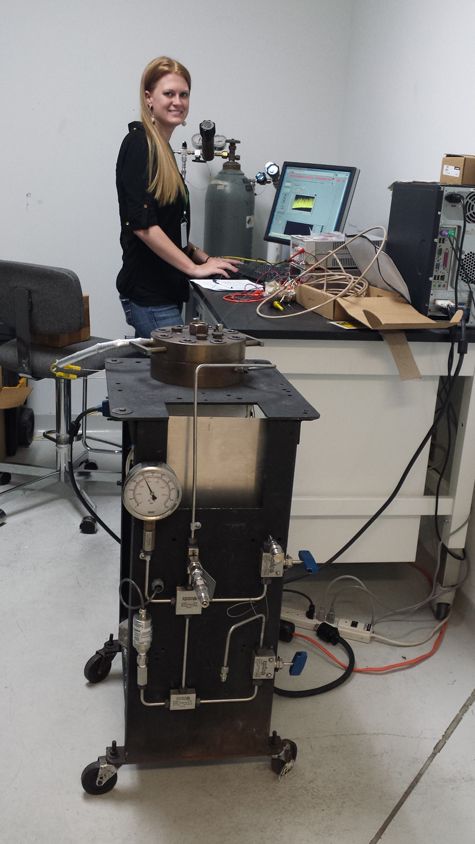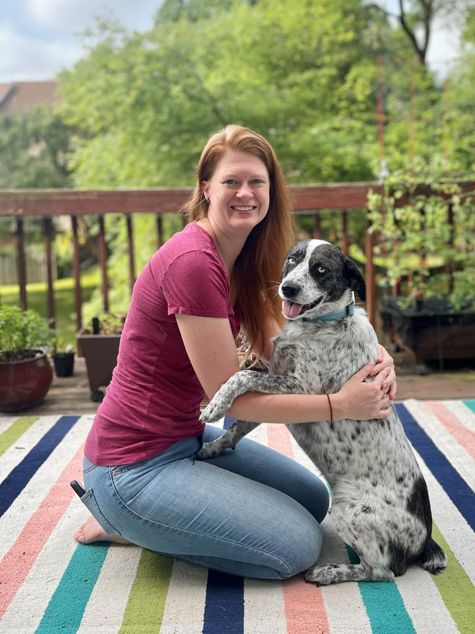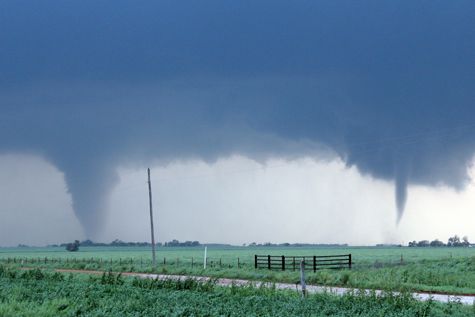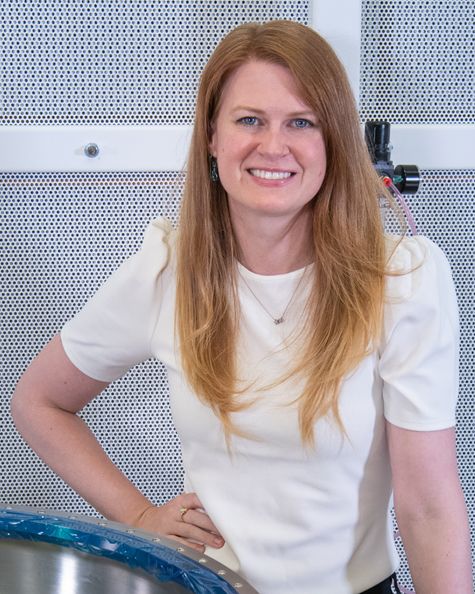Early Career Scientist Spotlight
Dr. Erika Kohler
Planetary Scientist
Astrochemistry Laboratory
What inspired you to pursue a career in planetary science?
I have always loved storms. I remember when I was a child, the night of the Jarrell, TX tornado, getting upset when my mom wouldn’t let me sit out on the porch to watch the storm. When it came time for me to think about college, I reached out to a local broadcast meteorologist for advice. They sent me a link on how some people research storms on planets other than Earth. I thought it was fascinating that other planets could have storms too, and even crazier ones than Earth has. Since then, I was hooked!
What is your research focus?
My research focus is to provide laboratory data that can both inform and validate scientific models and mission observations. To accomplish this, I design innovative experiments to simulate the extreme environments found on other planets, pushing the boundaries of what is possible for in situ measurements in a laboratory. So far, I have focused on simulating hot atmospheres, from Venus at 470°C to Hot Jupiters and Brown Dwarfs up to 2300°C, so we can achieve a variety of novel measurements. This way we can test hypotheses and validate spacecraft and observational data.

Credit: Natasha Johnson
What is one of your favorite moments in your career so far?
My absolute favorite moment was finding out that NASA’s DAVINCI mission (Deep Atmosphere Venus Investigation of Noble gases, Chemistry, and Imaging) was selected! It has been a surreal experience to be part of this team, and now we get to send a mission to Venus that will directly measure the atmosphere. It is going to be a fantastic mission. I am also excited to see what is learned from the two other missions to Venus, NASA’s VERITAS (Venus Emissivity, Radio Science, InSAR, Topography, and Spectroscopy) and ESA’s EnVision. I am personally hoping that we find out the source of the high-reflectivity radar anomalies that have been observed at high altitudes. Some of the theories for the anomalies are a type of metal snow. I can’t wait to see what secrets Venus will reveal to us.
What is one space mission that you are particularly excited about, and why?
I am particularly excited about the DAVINCI mission. We will be sending an atmospheric probe that will take a variety of direct measurements as it falls through that atmosphere. We will also take high-resolution images of Alpha Regio and will aim to identify the source of the atmospheric UV absorber, in addition to several other science questions we hope to answer. This mission will tell us a lot about Venus and will also help us better understand Venus-like exoplanets which are expected to be common. This mission should tell us a lot about comparative planetology and maybe even habitability!

Credit: KOHNAS
What do you enjoy the most about your job?
What I enjoy most is designing and implementing novel experiments to measure extreme environment data. Many of the environments we study are so different from what we experience on Earth that our equipment frequently does not have the capability to operate at those conditions. It is very rewarding to design something that successfully answers a difficult science question, especially when dealing with extreme environments. I also get to vaporize rocks and meteorites in the lab. That’s pretty cool!
What science fact consistently amazes you?
I am constantly amazed that metallic clouds exist. Hot Jupiters (a type of exoplanet) are so hot that they could have clouds made of minerals that form rocks here on Earth like silicates and iron. In fact, I thought this was so interesting that it became the focus of my postdoc. I measured the vapor pressures of several of these minerals at extremely high temperatures so we could better predict where they would form clouds in extrasolar planetary atmospheres.
What is a fun fact about you?
I used to chase storms! When I lived in Oklahoma, my classmates and I would occasionally take a break from studying to chase. It was a lot of fun and I hope to be able to schedule a trip in the future to do it again. Being able to see up close, like real close, what Mother Nature is capable of is truly awe-inspiring.

Credit: Erika Kohler
Biography
Home Town:
Hutto, TX
Undergraduate Degree:
BS in Meteorology, University of Oklahoma, Norman, OK
Post-graduate Degrees:
PhD in Space and Planetary Sciences, University of Arkansas, Fayetteville, AR

